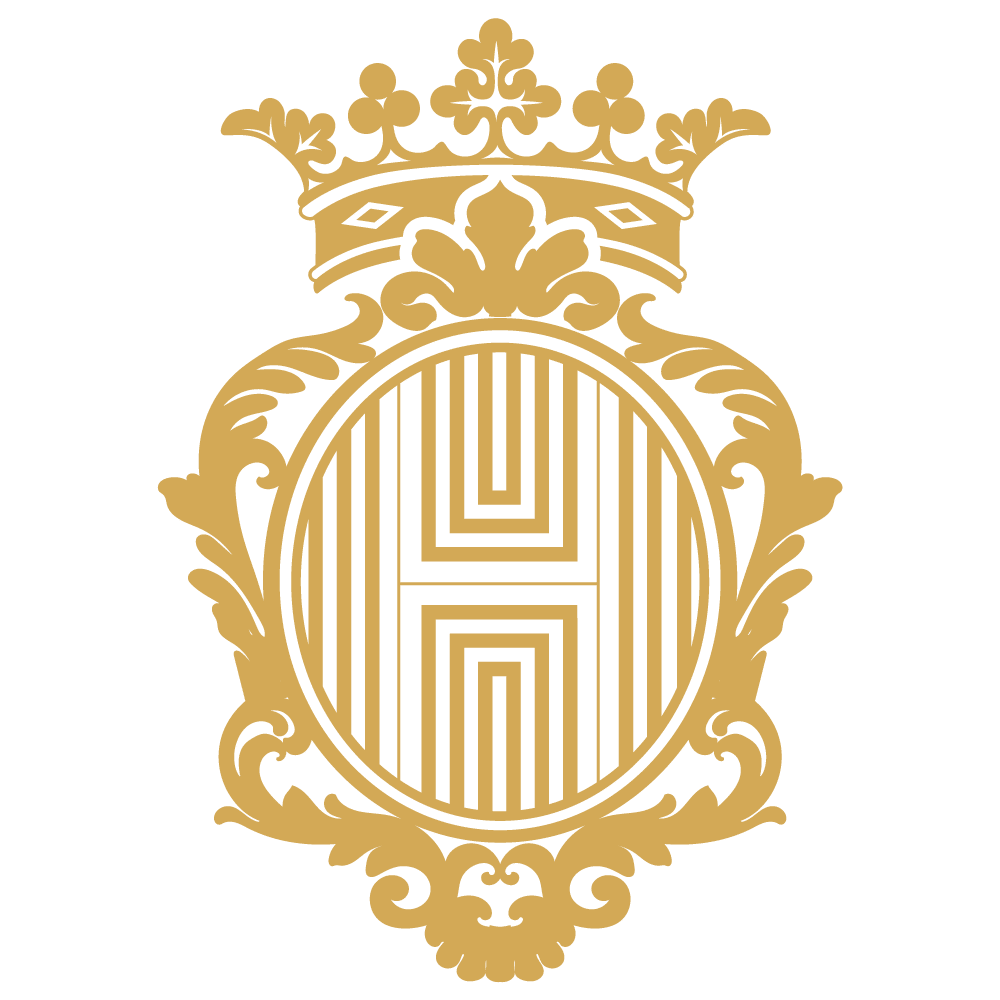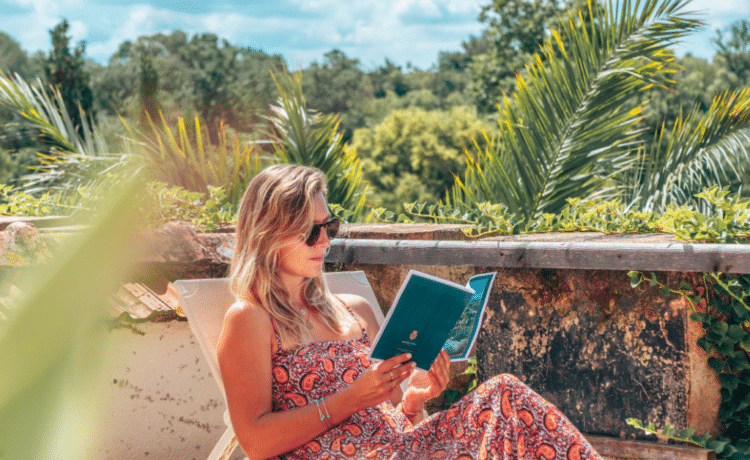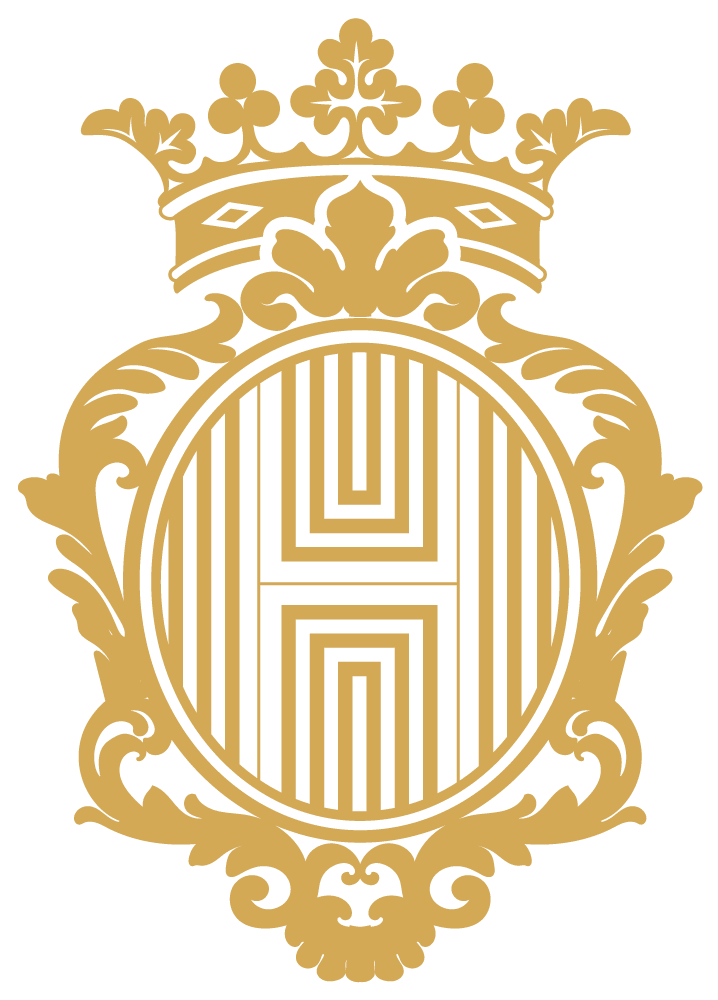Le château trouve ses origines sur les bases d’une ancienne forteresse du Moyen Age érigée vers 1260 . Le fief de Combas , siège d’un prieuré au XIVe siècle, appartenait en l’an 1694 à Charles de Montagut, seigneur de Combas; il est resté la propriété de la famille de Montagut (Charles, Alphonse de Montagut, 1704 et Catherine de Levat sa veuve, en 1742), jusqu’au 11 juin 1749. Date à laquelle, il fût acheté par Jean-François Daydé. Vendu à Antoine Hyacinthe Roussel, il passa ensuite dans la famille de M. de Barrès Servian, le 24 juillet 1813. Il n’y resta pas longtemps puisque Etienne Balme et Etienne Laurès de Murviel en firent l’acquisition le 2 mars 1826.
Enfin, le 22 décembre ceux-ci vendirent au marquis de Thézan-Saint Géniès. Le marquis de Thézan-Saint Géniès et la marquise, née de Bourdeille de Matha, firent de grands projets d’aménagement dans le domaine de Combas de 75ha.
Grâce à lui nous avons quelques informations sur la restauration entreprise : » on utilisera donc les murs déjà existants en reportant à l’extérieur les bâtiments d’exploitation de façon à dégager l’enceinte dont les solides assises servirent d’ossature à une construction nouvelle. Les tours furent relevées, un grand escalier édifié ainsi que la chapelle. Au premier étage, de grandes salles furent prévues à recevoir les tableaux, les meubles, les souvenirs de famille retirés des châteaux de St Génies et de Corneilhan »
Il a aussi évoqué le cadre créé pour le nouveau château : « La marquise de St Géniès, douée d’un gout éclairé, traçait et faisait planter le jardin à la française qui s’étend devant la façade nord et dont les arbres, aujourd’hui centenaires, produisent un si bel effet ornemental. Un barrage fut établi pour arrêter les eaux du ruisseau de St Michel et Combas, son lit fut élargi dans sa partie touchant le parc, formant une sorte de lac, les terres en provenant servirent au vallonnement de certaines perspectives ».
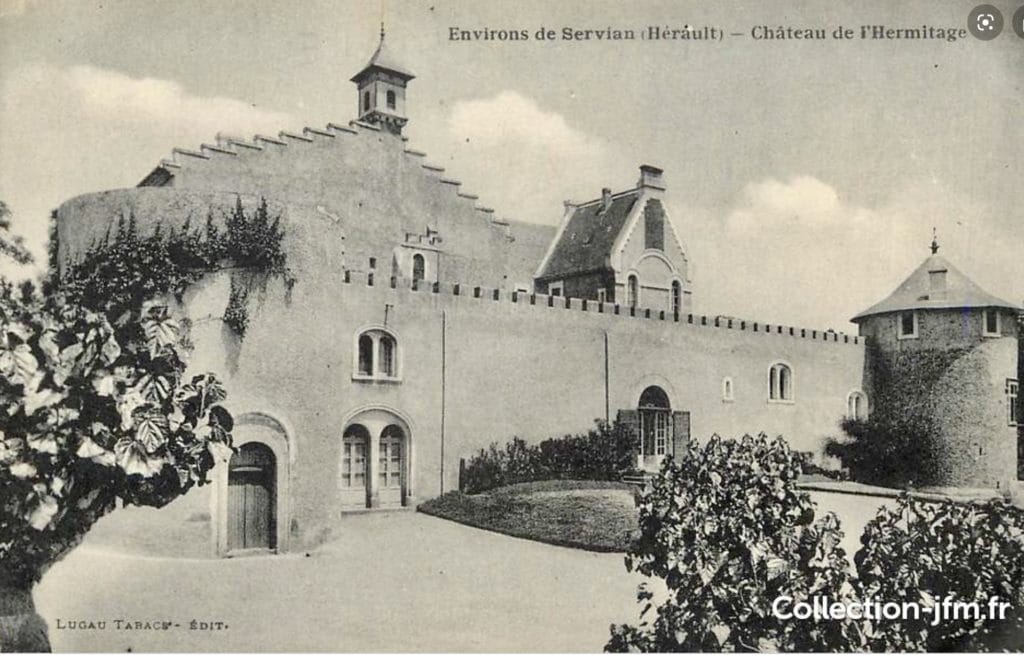
Il s’agit donc d’un exemple intéressant de restauration précoce d’un ancien château qui n’a pas satisfait complètement la génération viticole » postérieure. En effet, le dernier marquis de Thézan-Saint Géniès a ajoué un clocheton et une tour en reconnaissant nostalgiquement : « il fallait de l’espace, aussi l’extérieur fut’il trop souvent sacrifié aux aménagements intérieurs ». En fait, ses aïeux savaient que l’intérêt majeur de leur demeure seraient les meubles, portraits et archives des Thézan-Saint Géniès qui firent de L’Hermitage un lieu de mémoire quant à l’histoire de note pays depuis le Moyen Age.
Les Saint Géniès n’ayant, au XVIIIe siècle, qu’une fille, épouse d’un Baron de Maussac (des seigneurs de Corneilhan), Louis XV érigea en 1750, au profit de ce dernier, le marquisat de Saint Géniès comprenant notamment les terres de ce nom et de Corneilhan. Cette seconde maison s’éteignit avec notre précieux informateur dont nous avons vu le mariage, en 1896, avec une Mandeville, dans la présentation générale, son père lui donnant alors ce domaine de 52ha évalué 200 000F. Il décéda en 1943 après avoir institué pour héritier son cousin, le duc de Lévis – Mirepoix, de l’Académie française.
Une expérience authentique au Château Hermitage de Combas
Séjourner dans nos gîtes de charme offre une expérience authentique et chaleureuse. En effet, l’atmosphère qui se dégage d’un gîte de charme est généralement très accueillante et conviviale, grâce au lieu, souvent unique, mais aussi grâce à l’accueil des propriétaires. Tous nos gîtes de charme possèdent leur propre caractère grâce à une décoration authentique. En comparaison avec un hôtel standard, le gîte de charme offre une expérience plus personnalisée et chaleureuse, où l’on se sent comme chez soi. On y trouve souvent des éléments de décoration originaux et des équipements de qualité pour rendre le séjour encore plus agréable.
La tranquillité et l’intimité d’un gîte de charme
Le choix d’un gîte de charme pour des vacances offre de nombreux avantages en termes de tranquillité et d’intimité. Nous avons apporté beaucoup d’importance à votre bien-être avec les différents hébergements du château. Spacieux et élégants, ils disposent d’une vaste terrasse avec une vue dégagée sur les vignobles et d’un jardin privatif. Situés à l’écart de l’agitation des centres-villes, nos gîtes de charme vont vous permettre de profiter d’un environnement calme et paisible, propice à la détente et à la sérénité. Vous disposez d’un logement indépendant, équipé de toutes les commodités nécessaires pour vous sentir comme chez vous. Des vacances idéales pour se ressourcer loin du stress de la vie quotidienne !
Gîte de charme : un lieu de villégiature propice à la détente
Un autre avantage d’un gîte de charme est sa proximité avec la nature. En séjournant dans l’un de nos gîtes de charme, vous aurez la chance de découvrir la faune et la flore locales en explorant les sentiers de randonnée. À pied ou en vélo, ce sera l’occasion de profiter de l’air frais de la campagne. Au Château Hermitage de Combas, vous disposez également d’un jardin privatif. Cette immersion dans la nature offre une expérience unique et différente des vacances en ville, où l’on est souvent enfermé dans un environnement artificiel et bruyant. En choisissant un gîte de charme, vous allez renouer avec la nature, vous reconnecter avec votre environnement et profiter de moments de calme et de détente.
Gamme Supérieure : séjournez dans l’un de nos gîtes de charme
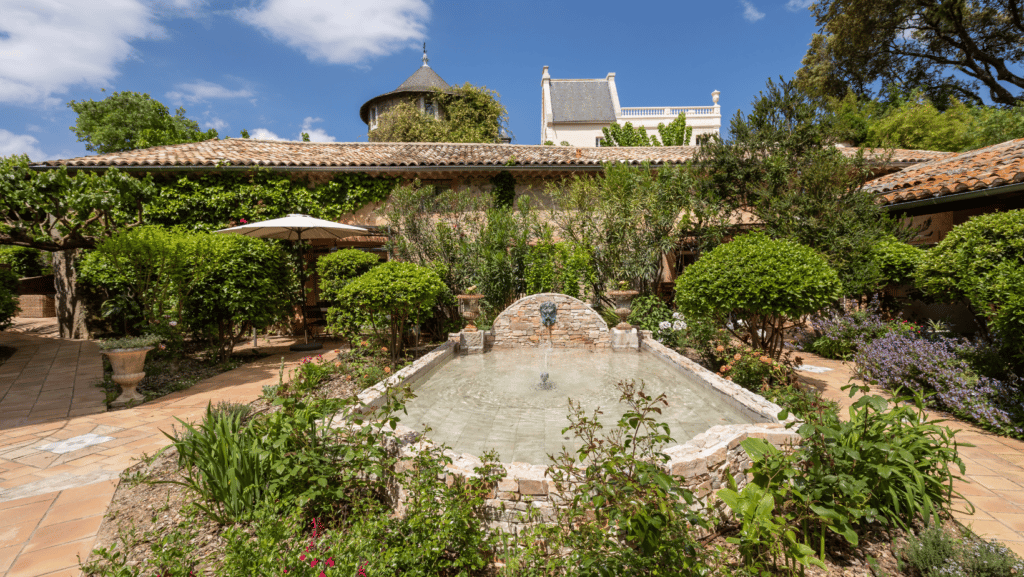
À la recherche d’une prochaine destination pour un week-end en pleine nature ? Le Château Hermitage de Combas est le lieu de villégiature par excellence. Il se trouve à proximité de Béziers et profite d’un emplacement exceptionnel entre montagnes et campagne environnante. D’une superficie de 45 à 115 m², nos gîtes de charme peuvent accueillir de 2 à 6 personnes. Spacieux, confortables, lumineux et bien pensés, ils disposent de matériaux nobles et de meubles d’époque. En effet, les gîtes de charme sont souvent décorés avec goût, créant une ambiance chaleureuse et accueillante pour les voyageurs.
Nichés dans un écrin de verdure, vous pourrez profiter d’une vue directe sur le hameau et sa magnifique fontaine. Tous nos voyageurs bénéficient de leur propre extérieur, à la discrétion des autres hébergements voisins. Alors, qu’attendez-vous pour nous rendre visite ?
Zoom sur les neuf hébergements de la Gamme Supérieure
Comme vous l’aurez compris, neuf hébergements composent la gamme Supérieure de notre domaine. Quelle que soit la raison de votre séjour au château Hermitage de Combas, vous trouverez le logement idéal. Pour deux personnes, nous vous proposons 3 gîtes de charme de la gamme Supérieure :
– Le Roy (43m²), Marie Cressé (45m²), Don Juan (47m²), situés au Hameau en rez-de-chaussée, se composent d’une chambre, d’une salle de bain, d’un salon avec télévision et d’une cuisine équipée.
Pour quatre personnes et plus, nous vous proposons 6 gîtes de charme :
– Jean-Baptiste Armand (75m²), Tartuffe (76m²), Esprit de Magdeleine (83m²) et Ecole des Maris (87m²) comprennent deux chambres, une salle de bain, un salon et une cuisine équipée.
– Le gîte de charme Jean-Baptiste Poquelin, d’une superficie de 115m², peut accueillir jusqu’à six personnes et se compose de trois chambres, dont une avec sa salle de bain privée, une deuxième salle de bain, un salon, ainsi qu’une cuisine équipée. Quant au Marquis de Saint-Geniès (68m²), il se situe dans le château et peut accueillir jusqu’à quatre personnes.
En résumé, que vous soyez 2 ou 6 personnes, nous pouvons vous proposer l’hébergement idéal.
Offrez-vous le luxe d’un logement privatif dans un cadre raffiné
Vous cherchez une expérience unique pour vos vacances ou votre prochain séjour d’affaires ? Le Château Hermitage de Combas vous invite à vous offrir le luxe d’un logement privatif dans un cadre raffiné. Niché au cœur d’un parc arboré de 4 hectares, ce château, bâti sur les ruines d’une forteresse datée du XIIIe s, a été rénové avec soin pour offrir un cadre de vie élégant et confortable à ses hôtes. Les chambres et les suites sont décorées avec goût, alliant harmonieusement le charme d’époque et les équipements modernes.
Vous pourrez profiter d’un séjour paisible et relaxant, tout en bénéficiant des services et des installations haut de gamme offerts par le château. Que ce soit pour une escapade romantique, des vacances en famille ou un voyage d’affaires, le Château Hermitage de Combas vous promet une expérience inoubliable.
Le charme d’antan du Château Hermitage de Combas dans votre logement privatif paisible et spacieux
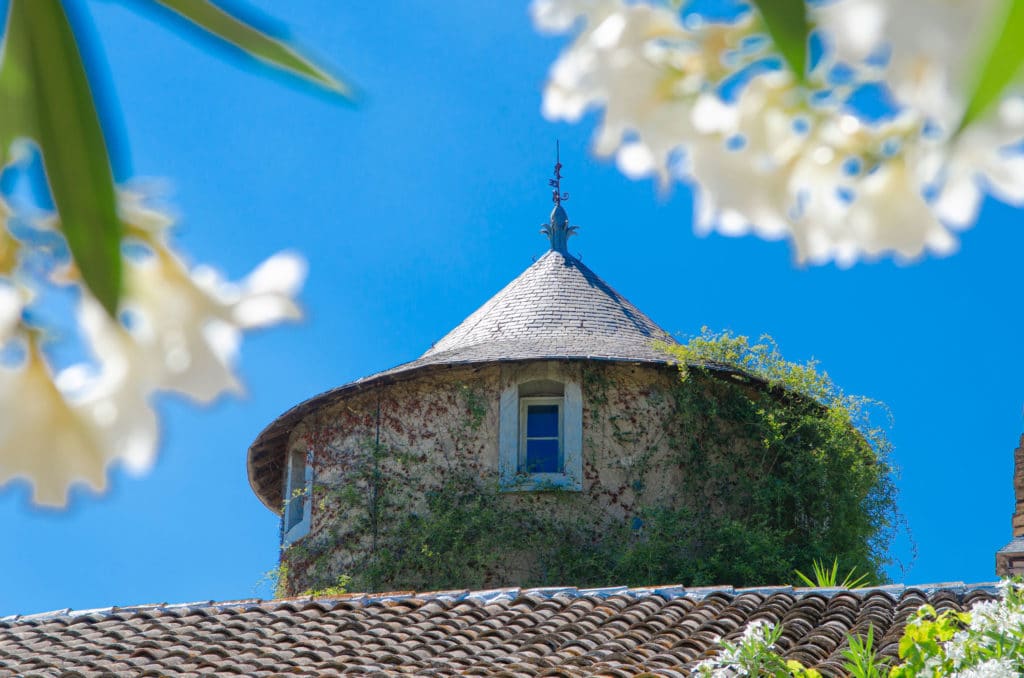
Erigé en 1260, le Château Hermitage de Combas trouve ses origines sur les bases d’une ancienne forteresse. En 1826, de grands aménagements furent réalisés par le marquis et la marquise de Thézan-Saint Géniès : le château se para de deux belles tours, un grand escalier fût édifié, une chapelle vit le jour ainsi que de grandes salles destinées à recevoir tableaux, meubles et autres souvenirs de famille. Aujourd’hui, le Château Hermitage de Combas est un lieu d’exception où vous pourrez séjourner en toute tranquillité.
Le logement privatif est l’option idéale pour ceux qui cherchent à se détendre dans un environnement paisible. Les chambres sont spacieuses et lumineuses, avec des vues imprenables sur les vignobles et les collines environnantes. Chacune est équipée d’un lit king-size, d’une salle de bains privative et d’un coin salon confortable. Les suites sont encore plus grandes et disposent d’un espace salon supplémentaire, idéal pour se détendre après une journée bien remplie. Profitez de l’intimité et du confort de votre propre espace, tout en admirant la beauté naturelle qui vous entoure.
Des services haut de gamme et une situation géographique idéale
Le Château Hermitage de Combas propose également une gamme de services haut de gamme pour rendre votre séjour encore plus agréable. Les logements privatifs disposent de cuisines entièrement équipées pour rendre votre séjour agréable. Le personnel attentif vous assistera pour organiser des activités sur mesure, comme des visites de vignobles, des excursions en vélo, des balades ou des séances de dégustation de vins. Vous pourrez ainsi profiter pleinement de votre séjour en combinant confort, autonomie et découvertes enrichissantes.
En plus de son cadre paisible et de ses services exceptionnels, le Château Hermitage de Combas est idéalement situé pour explorer la région. Vous pourrez visiter des villes médiévales pittoresques telles que Pézenas ou Carcassonne, vous détendre sur les plages de la Méditerranée, ou encore partir en randonnée dans les montagnes des Pyrénées. Profitez de votre séjour pour découvrir la richesse culturelle, historique et naturelle de la région, et laissez-vous séduire par ses paysages enchanteurs et son patrimoine remarquable. Une multitude d’activités et de découvertes passionnantes vous attendent à proximité du Château Hermitage de Combas.
Si vous cherchez une expérience unique pour votre prochain séjour, le Château Hermitage de Combas est l’option idéale. Vous pourrez vous offrir le luxe d’un logement privatif dans un cadre raffiné, tout en bénéficiant d’un service personnalisé et d’une situation géographique exceptionnelle. Réservez dès maintenant pour vivre des vacances inoubliables.
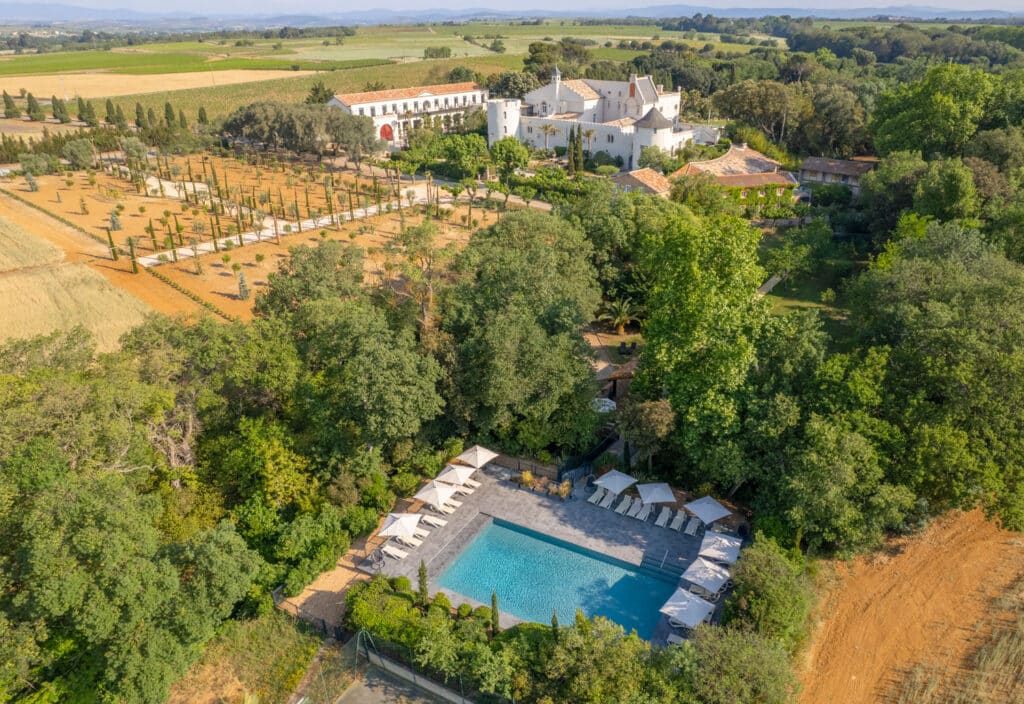
Découvrez nos gîtes de charme historiques au confort absolu
Le Château Hermitage de Combas est un lieu enchanteur où l’histoire se mêle harmonieusement au confort moderne. Si vous êtes à la recherche d’une escapade romantique ou d’une expérience authentique dans un cadre idyllique, nos gîtes de charme historiques sont faits pour vous. Plongez dans le charme d’antan tout en profitant du confort d’aujourd’hui. Dans cet article, nous vous invitons à découvrir l’élégance et le caractère intemporel offerts par nos gîtes de charme, où chaque instant sera une ode au bien-être et à la tranquillité. Préparez-vous à vous évader dans un havre de paix où l’histoire se révèle à chaque pas et où le confort absolu est notre priorité. Laissez-nous vous guider à travers cette expérience unique, où le passé et le présent se rencontrent pour créer des souvenirs inoubliables.
Le charme d’antan, le confort d’aujourd’hui : nos gîtes de charme vous offrent le meilleur des deux mondes
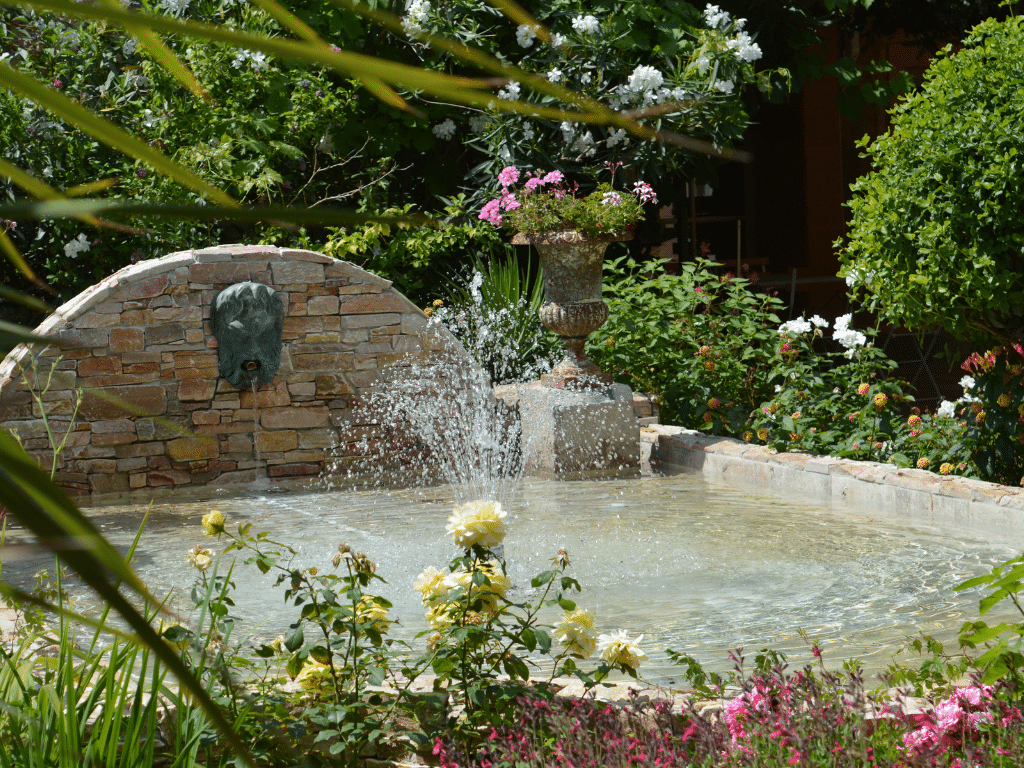
Nos gîtes de charme sont bien plus que de simples hébergements. Ils sont le reflet d’un passé riche et fascinant, avec leurs murs chargés d’histoire et leur architecture authentique. Chacun d’entre eux a été préservé avec soin, mettant en valeur les éléments architecturaux traditionnels et les caractéristiques uniques de chaque bâtiment. En séjournant dans l’un de nos gîtes au château, vous serez transporté dans une époque révolue, où chaque détail raconte une histoire et vous permet de ressentir l’âme du lieu.
Cependant, ne vous méprenez pas, le confort et les commodités contemporaines n’ont pas été oubliés. Nous comprenons l’importance de créer une expérience de séjour harmonieuse où vous pourrez profiter de toutes les commodités modernes sans sacrifier le charme et l’authenticité des lieux. Chaque gîte a été soigneusement rénové pour répondre aux besoins et aux attentes des voyageurs d’aujourd’hui. Vous trouverez des équipements modernes tels que des salles de bains élégantes, des cuisines entièrement équipées, des espaces de vie confortables et des installations technologiques discrètement intégrées.
Imaginez-vous vous détendre dans un salon confortable, entouré d’un décor d’époque, tout en profitant d’une connexion Wi-Fi haut débit. Préparez un délicieux repas dans une cuisine moderne, équipée d’appareils dernier cri, tout en admirant les éléments architecturaux d’origine. Passez une nuit de sommeil réparateur dans une chambre à la fois élégante et confortable, où le charme du mobilier d’époque se marie harmonieusement avec des matelas et du linge de lit de haute qualité.
Lorsque vous séjournez dans nos hébergements, vous vivrez une expérience unique et mémorable, où le passé et le présent se marient harmonieusement. Vous pourrez explorer les environs et vous immerger dans l’histoire locale, tout en profitant d’un niveau de confort moderne qui vous permettra de vous sentir comme chez vous. Que vous soyez à la recherche d’une escapade romantique, d’une retraite paisible ou d’une expérience culturelle enrichissante, nos gîtes de charme sont conçus pour vous offrir un séjour inoubliable où vous pourrez véritablement vous évader du quotidien et vous ressourcer.
Escapade romantique : séjournez dans nos hébergements au confort absolu
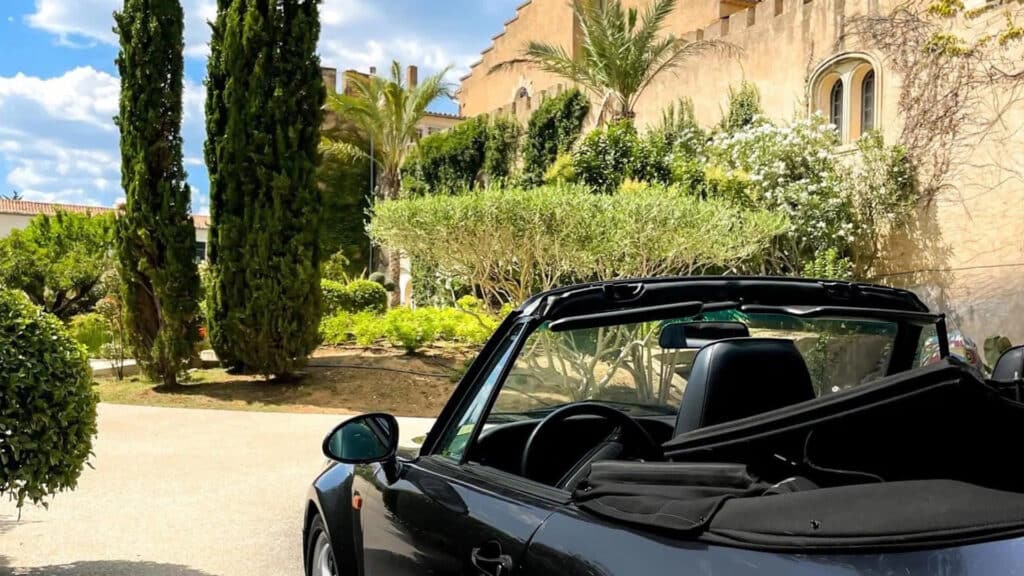
Si vous êtes à la recherche d’une escapade romantique, nos gîtes de charme vous offrent l’endroit idéal pour vivre des moments d’intimité et de romance. Laissez-vous envoûter par l’atmosphère chaleureuse et le caractère intemporel de nos hébergements, conçus spécialement pour les couples en quête de détente et d’amour.
Chaque hébergement a été aménagé avec soin pour créer un environnement propice à la romance. Vous découvrirez des espaces intimes et confortables, où vous pourrez vous détendre et profiter pleinement de votre séjour. Que ce soit dans un salon douillet avec une cheminée crépitante, une chambre à coucher élégante et romantique ou une terrasse privée offrant une vue imprenable sur le paysage environnant, nos gîtes de charme sont conçus pour ravir vos sens et créer des souvenirs inoubliables.
Pour votre confort absolu, nous avons veillé à ce que chaque détail soit parfait. Les lits sont moelleux et confortables, les draps en coton doux vous enveloppent délicatement, et les salles de bains modernes sont équipées de douches relaxantes et de baignoires où vous pourrez vous prélasser. De plus, vous trouverez dans chaque gîte des équipements de haute qualité tels que la climatisation, la télévision par satellite et un accès Internet haut débit, pour que vous puissiez vous sentir comme chez vous tout en vous offrant une escapade romantique.
Profitez de votre séjour pour vous perdre dans les jardins pittoresques du Château Hermitage de Combas, où vous pourrez vous promener main dans la main et vous émerveiller devant la beauté naturelle qui vous entoure. Que vous souhaitiez vous relaxer près de la piscine, déguster un délicieux repas préparé dans votre cuisine entièrement équipée ou partir à la découverte des environs, nos gîtes de charme vous offrent un havre de paix où vous pourrez créer des souvenirs inoubliables avec votre être cher.
Au Château Hermitage de Combas, notre engagement va bien au-delà d’un simple séjour. Nous aspirons à vous offrir une expérience immersive où l’élégance, le charme et le confort se réunissent pour créer des souvenirs inoubliables. Dans cet environnement enchanteur, vous découvrirez une atmosphère raffinée où le charme historique se marie harmonieusement avec les commodités modernes. Réservez dès aujourd’hui et plongez dans l’atmosphère envoûtante de nos hébergements d’exception.
Des gîtes de charme équipés et confortables au Château
À proximité de Béziers, dans le département de l’Hérault, le Château Hermitage de Combas est un domaine doté d’un parc de 4 hectares et 90 hectares de terres agricoles dont 40 plantés de vignes offrant un cadre de réception somptueux pour vos événements. Cet endroit est un véritable voyage dans le temps alliant histoire, tradition et élégance. Réservez une parenthèse insolite et vivez une expérience unique dans nos gîtes de charme. Ce domaine d’exception dispose également d’une vue imprenable sur la campagne environnante. Venez découvrir notre magnifique parc, entouré de vignes et d’arbres centenaires.
Nos gîtes de charme nichés au cœur du Château
Le Château Hermitage de Combas propose une vingtaine d’hébergements confortables et raffinés, parfaits pour une escapade romantique ou une échappée en famille. Nos gîtes de charme sont nichés au cœur du château, au sein du Hameau ou au-dessus de l’Orangerie (salle de réception) offrant un cadre intimiste et apaisant pour se ressourcer. Les hébergements sont répartis en plusieurs gammes d’appartements, tous équipés pour votre confort. Chaque gîte dispose d’une cuisine équipée, d’une salle de bain privative et d’un salon confortable.
En plus d’un intérieur élégant et confortable, nos hébergements offrent également de belles terrasses avec salon de jardin. Certaines fenêtres donnent sur le magnifique parc arboré du château, où vous pourrez admirer les vignes et les arbres centenaires. Le calme et la tranquillité du parc vous permettront de vous détendre et de vous ressourcer en toute sérénité. Vous pourrez également profiter de la piscine extérieure pour vous rafraîchir pendant les chaudes journées d’été. Nos gîtes au château sont l’endroit idéal pour une escapade romantique, un moment en famille ou même pour un séjour de travail dans un environnement paisible et inspirant.
L’alliance parfaite entre confort moderne et charme historique
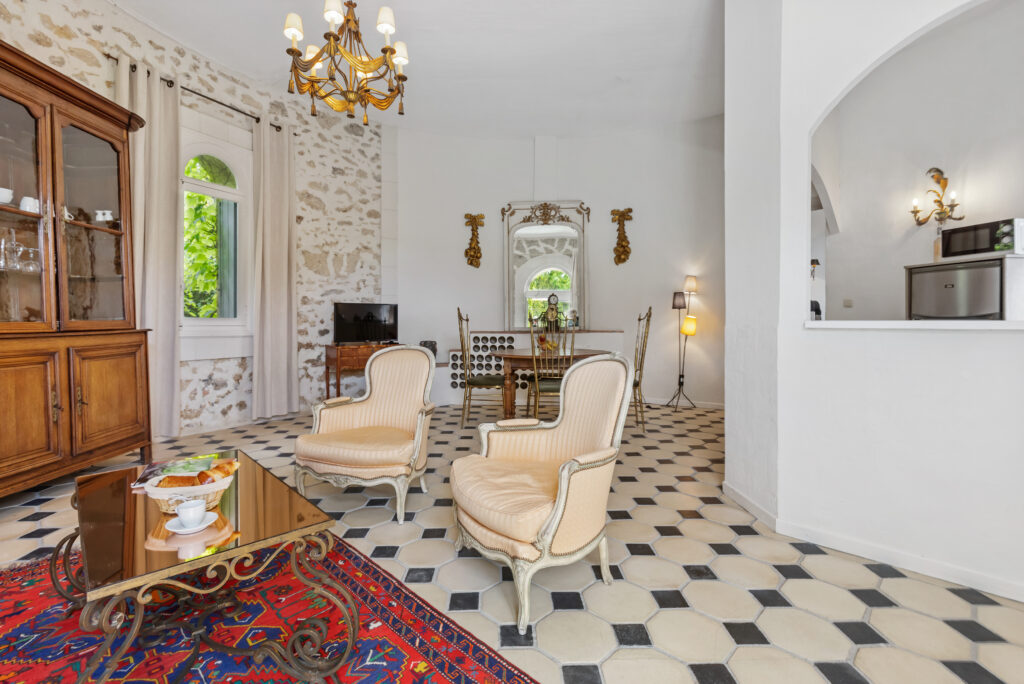
Nos gîtes de charme sont conçus pour vous offrir le meilleur des deux mondes : le confort moderne et le charme historique. Les intérieurs sont décorés avec soin pour créer une ambiance chaleureuse et authentique. Vous apprécierez les meubles en bois massif, les draps en coton doux et les matériaux nobles. Nous avons également apporté une attention particulière à l’équipement de nos gîtes pour votre confort. Nos hébergements disposent de la climatisation, le Wi-Fi gratuit et une télévision à écran plat.
De plus, chaque gîte au château a été aménagé en préservant l’architecture et les éléments historiques du Château, tels que les poutres apparentes et les murs en pierre. Cela crée une ambiance unique et chaleureuse, où le charme historique se mélange parfaitement avec le confort moderne. Vous vous sentirez comme chez vous dans nos hébergements spacieux et élégants. Les lits sont confortables et moelleux pour vous permettre de passer une nuit de sommeil reposante.
Les salons sont équipés d’un canapé confortable et d’une télévision à écran plat pour vous divertir pendant votre séjour. Vous pourrez également préparer vos repas dans la cuisine équipée, avec tout ce dont vous avez besoin pour cuisiner des plats délicieux. Chaque détail a été pensé pour votre confort et votre satisfaction pendant votre séjour au domaine du Château Hermitage de Combas.
Le Château Hermitage de Combas est un domaine d’exception pour une escapade en amoureux ou en famille. Nos gîtes de charme équipés et confortables sont parfaits pour découvrir la région et se ressourcer dans un cadre enchanteur.
